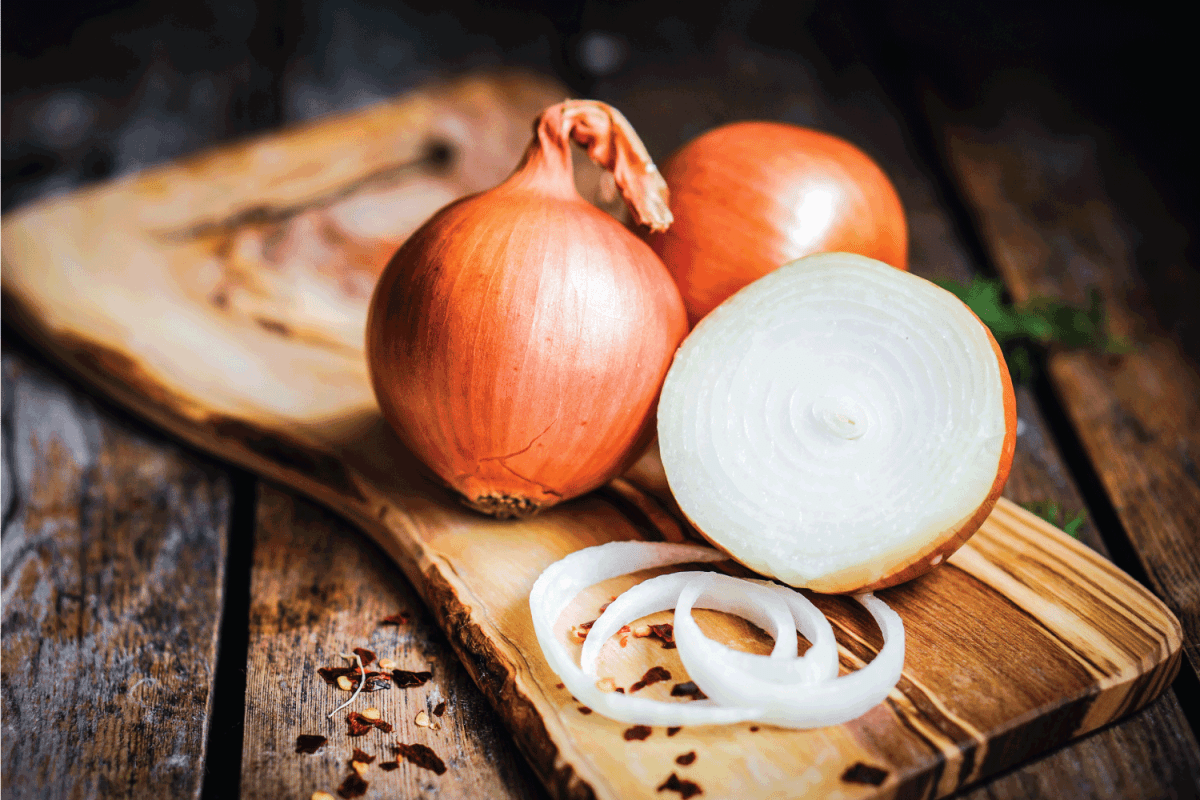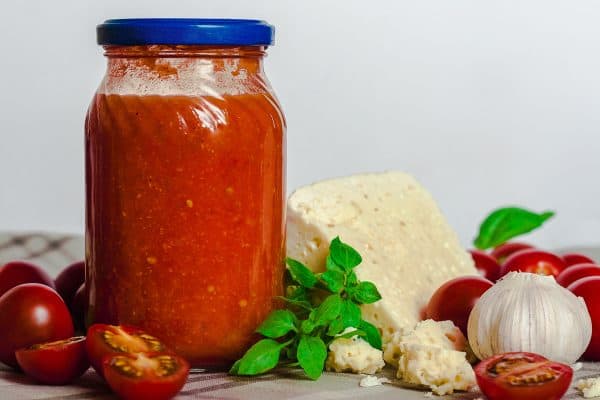Cooking is an enjoyable activity, except when the recipe requires onions. There is a high tendency that before you finish cutting the onions, you have been reduced to tears. And for some, it can be quite a painful experience. There have been proven methods to prevent this from happening and maybe you would like to know if freezing can be an option. We researched the topic and listed below what we found out.
Freezing is one of the better ways to prevent you from tearing up while cutting your onions. Placing the onion in the freezer for at least 15 minutes prevents the lachrymatory-factor synthase from converting the sulfenic acid present inside onion cells into its gaseous form. When the gas wafts into your eyes, this causes irritation which triggers the lacrimal ducts to release tears.
Keep reading as we will discuss further on how to freeze onions. But first, let’s elaborate on why freezing onions prevents you from crying.
NOTE: WE MAY GET A COMMISSION IF YOU DECIDE TO MAKE A PURCHASE THROUGH THESE LINKS. THERE'S ADDITIONAL NO COST TO YOU. CHECK THE BOTTOM OF THE PAGE FOR MORE INFORMATION.

Why does putting an onion in the freezer helps prevent you from crying?
When you place the onions in the freezer, the cold temperature blocks the conversion of L-propenyl sulfenic acid to propanethial-S-oxide by deactivating the lachymatory-factor synthase.
Onions contain amino acids called sulfoxide that convert to sulfenic acid inside the onion cells when they are damaged. By cutting through the onion, alliinase enzymes are released that causes water to interact with sulfoxide (or properly, S-1-propenyl-L-cysteine sulfoxide) to produce several sulfur-containing compounds. One of these is L-propenyl sulfenic acid. This is then converted into propanethial-S-oxide by lachrymatory-factor synthase.
Propanethial-S-Oxide or also known as thiopropanol-S-oxide directly reacts with your eyes like how a tear gas would. When it wafts into your eyes, the sulfur component interacts with the water present and produces sulfuric acid. The presence of sulfuric acid triggers your lacrimal ducts to release tears. The tears dilute the sulfuric acid to wash away the stingy feeling.
Mature onions contain more of the enzymes responsible for converting the amino acids into the sulfur gas. And this trait is thought to be a natural defense against being eaten by animals. But later research has shown that the substances that can cause the tearing are also able to kill bacteria and fungus.
What is the best way to freeze onions?
If you opt to freeze your onions before cutting, then place them in the freezer with skin and roots on. Freezing can help deactivate the enzymes responsible for producing the tear-jerking gas. And it is said that it is most concentrated in the roots. Leaving the skin is important just so that you don’t dry out the onion.
But if you want to freeze them for storage, you can freeze them whole or chopped. Freezing whole onions will require blanching for about 3–7 minutes depending on the size of the onion. When blanching, you need to ensure that the onion is blanched evenly up to the core.
However, for diced or sliced onions, you do not need to blanch them. All you need to do is peel, cut, and then pack. Packing them in refrigerator bags or small freeze wares is preferred for convenient packing of amounts fit for individual recipes. However, you can also just pack them as one whole batch and then just bang them onto a hard surface to break a piece for use.
How long to freeze onion before cutting?
The individual onion size and the total amount of onions that you wish to cut can help determine the duration of stay in the freezer prior to cutting. For most, it can range between 15–30 minutes, with the skin on.
Ultimately, feel your onions. If they have cooled enough but not frosted, then you can take them out and process them before they revert to room temperature.
Can you freeze raw sliced onions?

You can freeze raw sliced onions. They can work best with stews, soups, or casseroles. And they can retain their flavor for 6 to 8 months. It will not be preferred for salad or toppings as freezing will make the onions lose their crunch. Also, don’t expect them to brown when being cooked as the ice crystals present will prevent that from happening.
You can either hand chop onions to your desired size or use the food processor if you’re chopping a large batch. Select the dice function if it is available. If you don’t have a dice function, you can also use the blade present but don’t overprocess. Smaller pieces can turn into mush when you defrost them for cooking. Make sure you stay away from the vent when you add the onions in batch or open the cover away from you so that you don’t inhale the fumes. Otherwise, you may break down in tears.
Once chopped, you can place them directly in bags and freeze them. Make sure that you lay them flat so that they freeze evenly. Or place them in trays while in the freezer for a good 2 hours before packing in separate bags. The second method can help reduce your exposure to raw cut onions while packing. Also, the onions will stay separated, making it easy for you to measure out the needed amount for your use.
Alternatively, you can pack them accordingly depending on the amount that you normally use. A good gauge to use is that a medium onion is equivalent to about 1.25 cups while a large onion can fill about 2.25 cups when diced.
How do you keep onions from making you cry?
Other than freezing your onions, soaking them in water or just chilling prior to cutting will help prevent your eyes from tearing up. Chilling prevents the enzyme from mixing with the sulfenic acids while you cut, whereas soaking them in water absorbs the gas that can evaporate into your eyes when you cut. Allow at least 30 minutes for the onions to soak or chill.
You should also consider using a sharp knife to chop your onion. Poor knife tends to crush into the onion skin which releases more propanethial S-oxide.
Other measures that you can consider are the following:
- Deviate the gas by either turning on a fan or lighting a candle. The candle will absorb the gas while adding air into the equation will drive away the gas. Or cut the onions in areas with drafts of air near the window or range hood.
- Use either a blender or a food processor to chop your onions so you minimize your actual exposure to the tear-jerking chemicals found inside your onions.
- Cut out the root before taking out the skin as roots contain more converting enzymes.
- Make sure not to touch your eyes or consider wearing goggles when cutting. The goggles will physically prevent the gas from landing into your eyes.
- Breath through your mouth or place a piece of bread in your mouth while slicing.
- When cutting the onions, slice the onions at an angle with the tubes facing away from you.
You can also use a combination of the above measures if you want to reduce your chances of tearing to the lowest possible risk.
In Summary
Onions make you cry when you slice them because the cells are damaged as you cut. And when they are damaged, they release a sulfur-containing gas that behaves like a tear gas—stinging irritant to the eye. Exposure to it triggers that natural reflex producing tears. Chilling or freezing can help reduce this as the cold temperature deactivates the enzymes that help in the conversion of S-1-propenyl-L-cysteine sulfoxide present inside the onion cells to propanethial-S-oxide gas, which leaks and eventually lands in your eyes.



